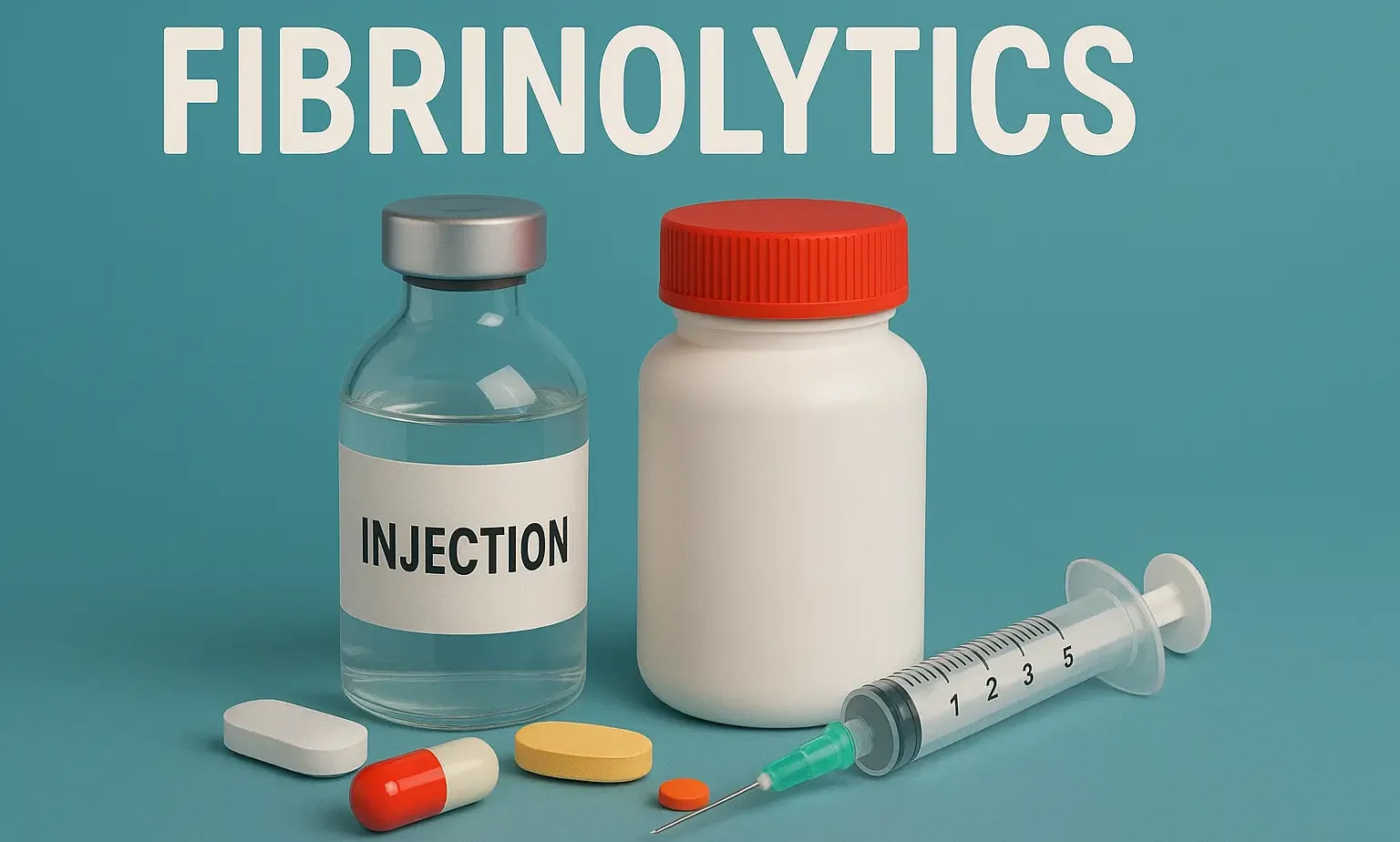Definition of Fibrinolytics:
- Fibrinolytics, also known as thrombolytics, are agents that dissolve blood clots by activating the fibrinolytic system.
Mechanism of Action
- Activation of Plasminogen: Fibrinolytics convert plasminogen to plasmin, an enzyme that degrades fibrin clots.
- Cleavage of Fibrin: Plasmin breaks down fibrin into soluble degradation products, dissolving the clot.
Common Fibrinolytic Agents
- Alteplase (tPA): Recombinant tissue plasminogen activator; used in acute myocardial infarction (AMI), ischemic stroke, and pulmonary embolism.
- Reteplase: Recombinant variant of tPA with a longer half-life.
- Tenecteplase: Genetically modified tPA with enhanced fibrin specificity.
- Streptokinase: Bacterial enzyme that activates plasminogen; less commonly used due to immunogenicity.
Clinical Indications
- Acute Myocardial Infarction (AMI): Restores coronary blood flow when PCI is not immediately available.
- Ischemic Stroke: Must be administered within a narrow time window to minimize hemorrhagic risk.
- Pulmonary Embolism: Especially in massive or high-risk cases.
- Deep Vein Thrombosis (DVT): In selected cases to prevent post-thrombotic syndrome.
Advertisements
Clinical Considerations of Fibrinolytics
- Time-Sensitive: Efficacy is highest when administered early after clot formation.
- Contraindications: Active internal bleeding, recent surgery, hemorrhagic stroke, severe hypertension.
- Side Effects: Major bleeding, intracranial hemorrhage, allergic reactions (especially with streptokinase).

